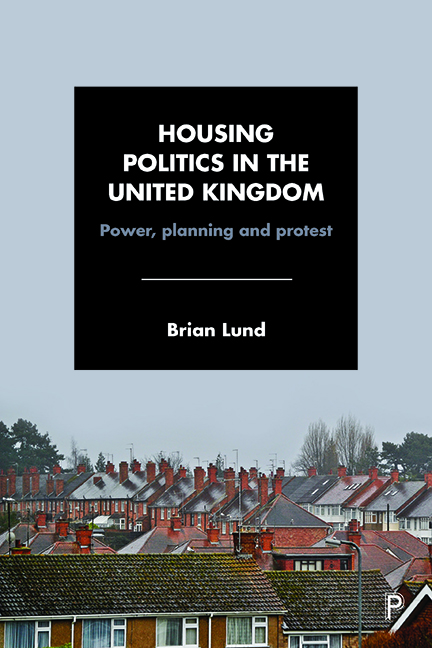Book contents
- Frontmatter
- Contents
- Acknowledgements
- Preface
- one Housing and politics
- two Land politics
- three Urban renewal: fencing the cities
- four Private landlords: ‘Rachmans’ or ‘residential property-owners’?
- five A property-owning democracy?
- six Eclipsing council housing
- seven Bending the ‘Third Arm’: politicians and housing associations
- eight Homelessness politics
- nine Devolution: where is the difference?
- ten Conclusion: power, planning and protest
- References
- Index
four - Private landlords: ‘Rachmans’ or ‘residential property-owners’?
Published online by Cambridge University Press: 05 April 2022
- Frontmatter
- Contents
- Acknowledgements
- Preface
- one Housing and politics
- two Land politics
- three Urban renewal: fencing the cities
- four Private landlords: ‘Rachmans’ or ‘residential property-owners’?
- five A property-owning democracy?
- six Eclipsing council housing
- seven Bending the ‘Third Arm’: politicians and housing associations
- eight Homelessness politics
- nine Devolution: where is the difference?
- ten Conclusion: power, planning and protest
- References
- Index
Summary
Between 80% and 90% of households rented from a private landlord in the early 20th century. The Labour movement was antagonist to the sector, and rent control, introduced in 1915 as a wartime ‘interim’ measure in response to tenant agitation, was difficult for the Conservatives to roll back. The electoral arithmetic – 54% of households were still renting from private landlords in the early 1950s – meant that ‘creeping decontrol’, launched in 1923 and again in 1957, had to be modified in response to its ballot box consequences. Under rent control, many landlords sold their properties to sitting tenants or on vacant possession, and with the growth of council housing plus new-builds for owner-occupation, by 1987, the private landlord's market share had declined to 8%. The Housing Act 1988, mortgage lender support via ‘Buy-to-Let’ (BTL) and New Labour's enthusiasm for private landlordism as a ‘flexible’ tenure revived the sector. Its renaissance continued under the Coalition government. In 2015, 19.6% of households in England were privately renting, and on current trends, by 2032, 35% of households will rent from a private landlord (Bentley, 2015).
Slum landlords
In the 19th century, builders wanted to sell their houses as quickly as possible to acquire capital for new developments. Residential landlords bought the dwellings and ‘realised’ their assets over time through renting. Most landlords owned only a few properties, although there were some large-scale property-owners – Stedman Jones (1992) records Thomas Flight as owning 18,000 houses in London. The typical landlord had savings from a business (eg traders, shopkeepers and publicans) that they augmented by borrowing. Local solicitors supplied an important financial source via organising people interested in passive urban investment through ‘building clubs’. Offer (1981, p 143) comments:
A large number of investors of purely local horizons were glad to place their money in the hands of those like the Forsytes, who had a ‘talent for bricks and mortar’ and ‘no dread in life like that of a 3 per cent for their money’.
In poorer areas, there was constant conflict between property-owners and tenants, with tenants often unable, and sometimes unwilling, to pay the rent.
- Type
- Chapter
- Information
- Housing Politics in the United KingdomPower, Planning and Protest, pp. 91 - 116Publisher: Bristol University PressPrint publication year: 2016



